Pumps are used to facilitate fluid movement in a wide range of applications including water distribution, HVAC, and manufacturing systems. Given their critical role in fluid transport and distribution, it is essential to optimize pump efficiency during system design and operation, as it directly impacts the system’s total energy consumption, operating costs, and environmental impact.
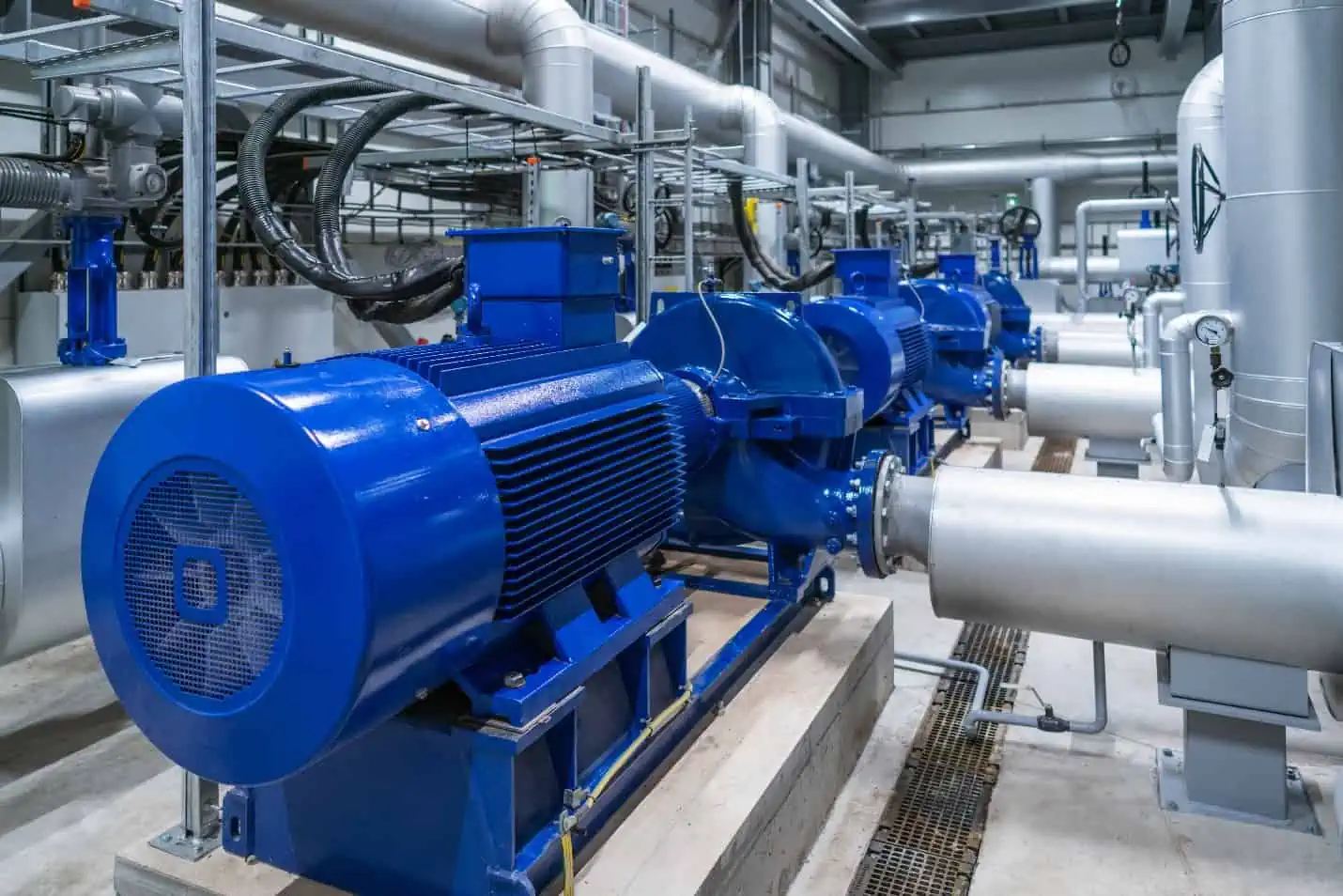
Pump Efficiency Calculation
A pump is like the heart of a fluid system. It is used to facilitate the flow of fluid from one point to another by creating a pressure difference between the two points, which causes the fluid to flow from an area of high pressure to an area of low pressure. The pressure difference is created by means of mechanical action to increase the velocity of the fluid or to increase the pressure at the pump’s outlet.
Efficiency is a measure of the ability and effectiveness of a device in converting energy from one form to another. In the case of pumps, that is converting mechanical energy to hydraulic energy. Hence, pump efficiency is a measure of the effectiveness of a pump in using energy to move fluid from one location to another— higher efficiency indicates less energy wastage and improved performance.
Pump efficiency is defined as the ratio of the hydraulic power imparted on the fluid to the electrical power input required to operate the pump. In other contexts, the power input can also refer to the Brake Horse Power (BHP) or the actual power delivered by an engine.

Elevate Your Engineering With Excel
Advance in Excel with engineering-focused training that equips you with the skills to streamline projects and accelerate your career.
In general, the equation for hydraulic efficiency is:
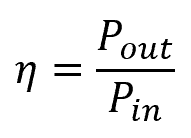
Where:
- ƞ = pump efficiency [unitless]
- Pout = hydraulic power output of the pump [kW]
- Pin = power input [kW]
The hydraulic power can be calculated using the formula:

Where:
- Q = flow rate [m3/s]
- ρ = density of fluid [kg/m3]
- g = gravitational acceleration constant [9.81 m/s2]
- H = total head [m]
Efficiency is not fixed for a given pump. Instead, it is influenced by several factors, such as the type of pump, the physical properties of the fluid being pumped, the flow rate, and the total head. The total head is the collective resistance caused by the static head and friction losses caused by pipes, fittings, heat exchangers, and other components of the system.
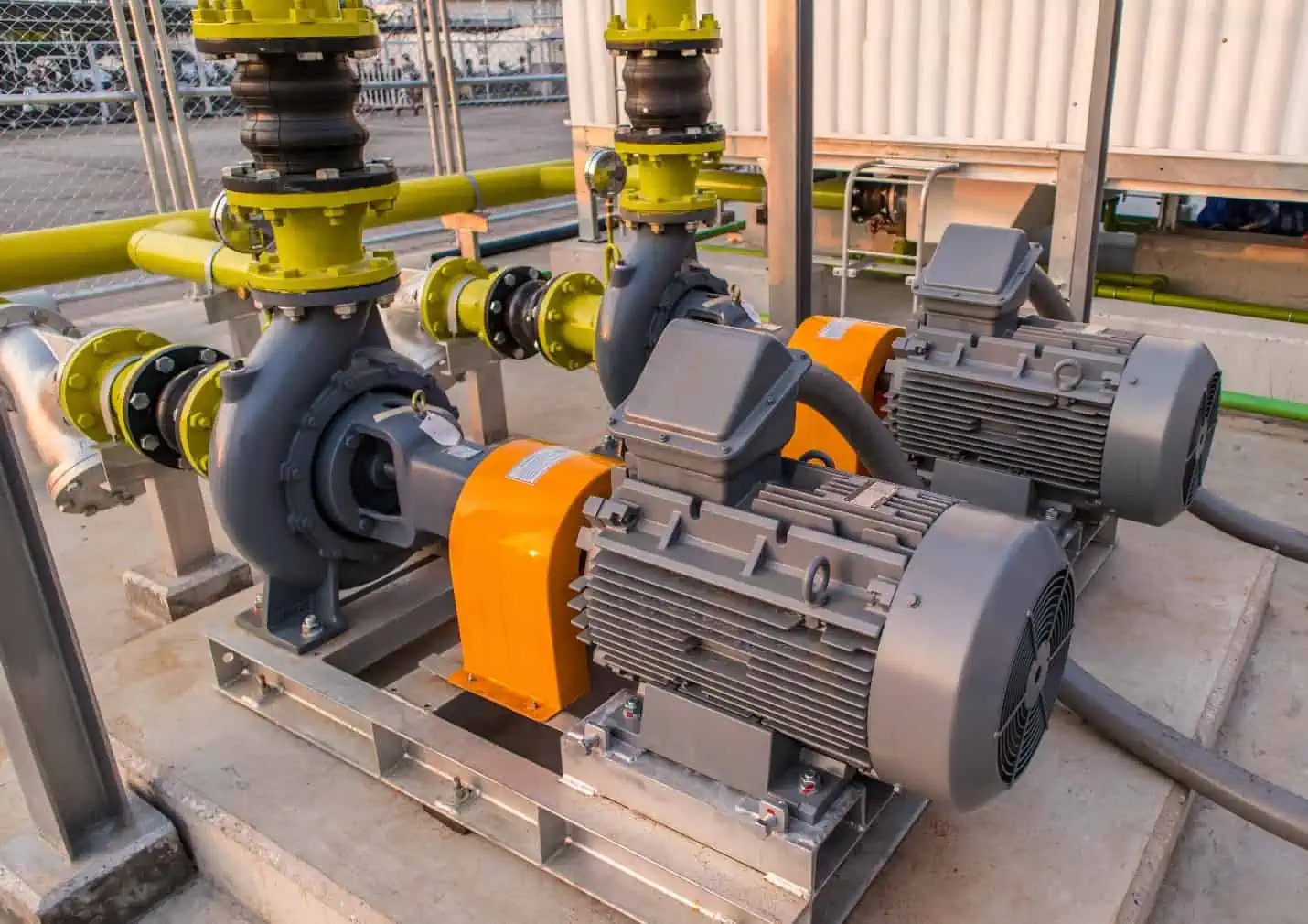
Pump performance data are usually supplied by the manufacturer to guide engineers and designers during pump selection. Due to its direct impact on energy costs and system performance, optimizing the efficiency of a pump is a crucial factor when selecting, designing, and operating pump systems.
However, it is important to note that as the system ages, pump efficiency also declines due to wear. Therefore, pumps should be regularly tested during operation.
Efficiency of Different Types of Pumps
Pumps are divided into two main types depending on their operating principles and mechanisms: positive-displacement and centrifugal pumps. Each type has its unique characteristics and different levels of efficiency.
Centrifugal Pump Efficiency
Centrifugal pumps operate by using a rotating impeller to transport fluids through a volute. Depending on the direction of their output flow, they can be categorized into two main types: radial and axial.
Radial flow pumps produce flow perpendicular to the impeller shaft and are widely used in low-to-medium volume, high-pressure applications. On the other hand, axial flow pumps produce flow along the impeller shaft and are used in high-volume, low-pressure applications.
The basic diagram of a centrifugal pump is show below:
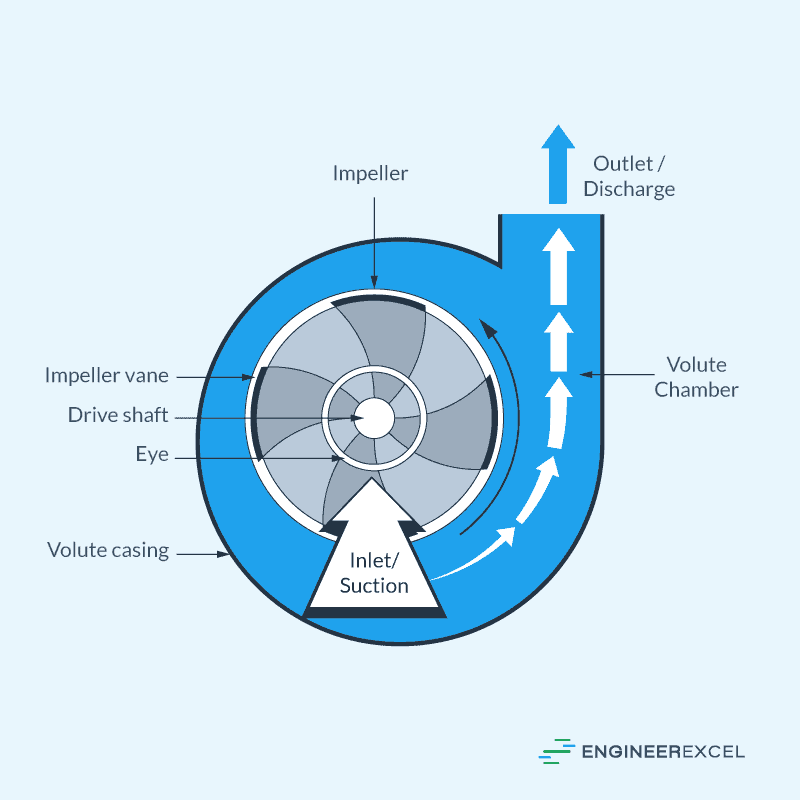
The impeller and volute are the two main components of a centrifugal pump. The impeller is fixed to a shaft and powered by a motor. The volute houses the impeller and collects and guides the fluid off of it.
The rotational movement of the impeller results in a centrifugal force that propels the fluid towards the periphery of the pump housing, thereby creating a low-pressure region at the center which causes additional fluid to be drawn into the impeller and resulting in a consistent flow.
Centrifugal pumps do not always pump the same volume— as total head increases, the flow rate decreases. Therefore, it is important to select a centrifugal pump that is designed and sized specifically for an application.
To guide designers, manufacturers of centrifugal pumps normally provide performance curve data that show the relationship between the differential head and the flow rate at different impeller diameters as well as the pump efficiency curve. A typical performance curve is shown in the diagram shown below:

The intersection between the peak efficiency and the performance curve is considered the Best Efficiency Point (BEP)— the operating point at which the pump can perform with optimum efficiency.
In the absence of published performance curves, Branan has developed an equation to calculate pump efficiency that closely approximates vendor data in the range of 100-1000 gpm flow rate and 50 to 300 ft developed head. The Branan equation is written as:

Where:
- H = developed head [ft]
- Q = flow rate [gpm]
Positive-Displacement Pump Efficiency
Positive displacement pumps operate by trapping a specific amount of fluid and then forcing it from the suction to the discharge side of the pump by means of reciprocating or rotating action. It is called “positive displacement” because no fluid comes back to the casing during pumping— that is, all pumping action is forward positive. This is in contrast to centrifugal pumps where a small amount of fluid gets back into the casing during operation to prevent damage even when the valve is fully closed.

Positive-displacement pumps come in many styles. They include
- Rotary lobe,
- Rotary gear (both internal and external gear)
- Screw
- Axial and bent axis piston pumps
- Reciprocating pumps
One of the advantages of these types of pumps is that their flow is proportional to speed and almost independent of pressure differential and viscosity. This is the reason why they are commonly utilized for thick and viscous fluids such as oil, syrup, and slurry.
However, the flow rate of these devices may be affected by the presence of gas bubbles in the fluid. Furthermore, the close tolerances between their internal components may lead to wear and tear.
The overall efficiency of positive-displacement pumps is affected by the volumetric efficiency which can be calculated using the formula:

Where:
- ƞv = volumetric efficiency [unitless]
- QA = actual liquid displacement [gpm]
- QT = theoretical liquid displacement [gpm]
- S = flow losses [gpm]
Flow is lost due to fluid that leaks through the internal clearances of the pump and due to compressibility, or the change in fluid volume with increasing pressure. The losses increase with pressure and decreasing viscosity and are normally in the range of 2% to 10%.
Calculating the liquid displacement depends on the type of positive-displacement pump. For reciprocating pumps, for example, the theoretical displacement can be calculated using the formula:

Where:
- Qrec = theoretical liquid displacement of a reciprocating pump [gpm]
- dp = diameter of piston [in]
- t = piston speed [ft/min]
Factors Affecting Pump Efficiency
Aside from the type of pump, there are several other factors that can affect its performance and efficiency during operation, including pump design, system design, pump size, operating conditions, and maintenance.
Pump Design
The biggest factor that can affect the efficiency of a pump is its inherent design. In general, a well-designed pump minimizes leakage, and possible energy losses in the mechanical seals, bearing frame, and other pump components.
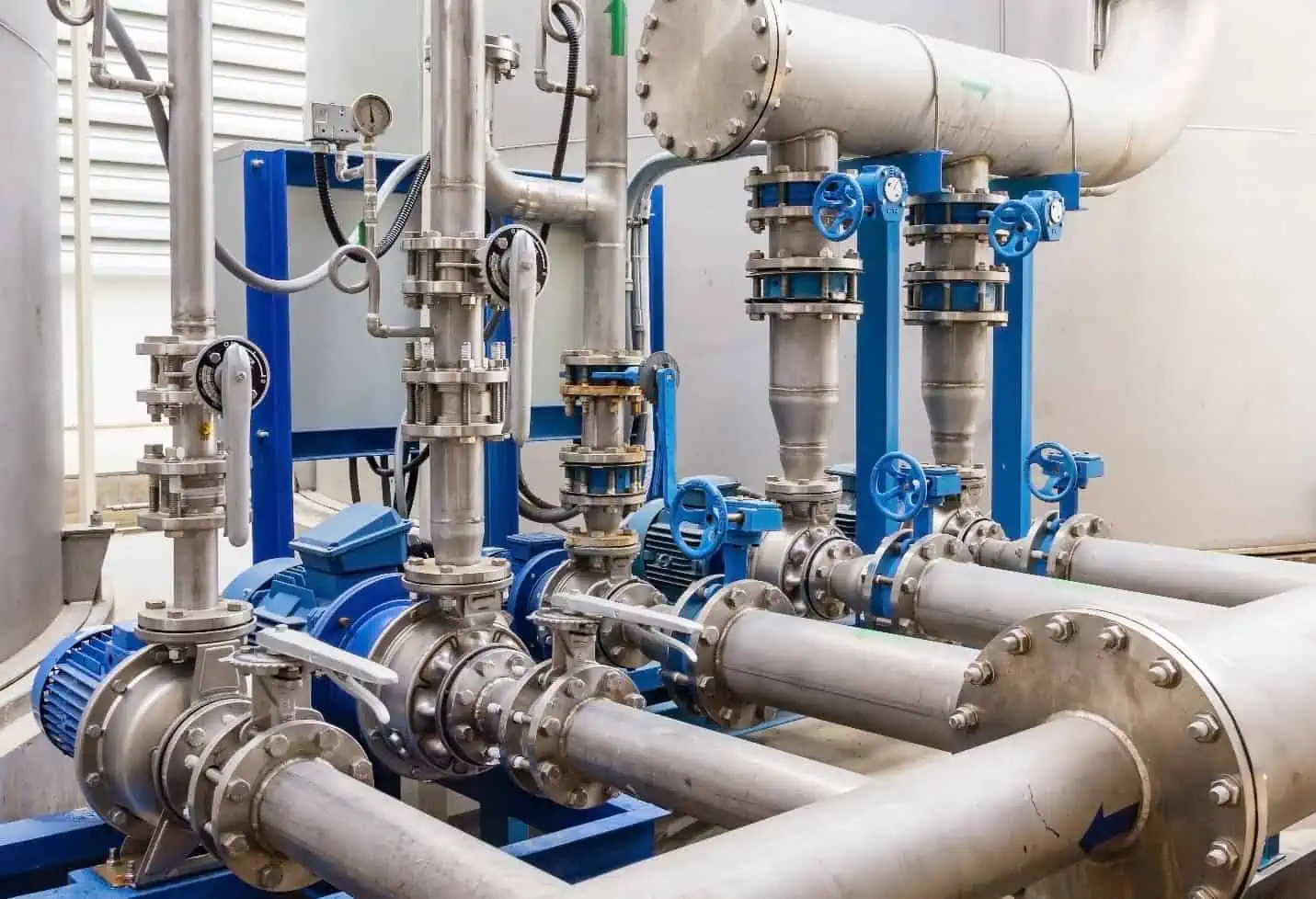
For centrifugal pumps, for example, an optimal pump design means a properly sized impeller, an appropriate amount of clearance, the right number of blades and vanes, and accurate alignment of the suction and discharge nozzles.
System Design
The overall design of the system where the pump will be used also plays a crucial role in pump efficiency. Factors such as the piping layout, valve selection, and pump location can affect the pressure drop and the physical properties of the fluid flowing through the pump, which ultimately affect the pump’s performance.
Pump Size & Operating Conditions
Selecting the proper pump size in accordance with the expected operating conditions is crucial in optimizing efficiency. An oversized pump can waste energy by using more electricity than necessary while an undersized pump may cause cavitation and reduced flow efficiency. Properly sizing pumps also maximizes the equipment lifespan.
Pump Maintenance
Lastly, it is important to regularly do maintenance checkups to ensure that the pump is at its best condition. Neglecting maintenance can lead to wear and tear of the impeller, casing, and other components, resulting in decreased efficiency. Regular maintenance includes cleaning, lubrication, and replacement of worn-out parts.
